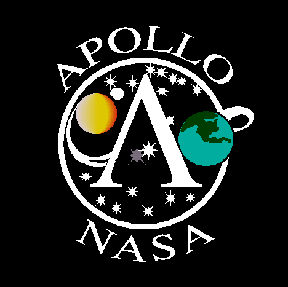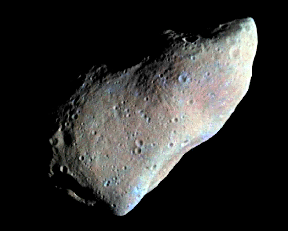
Glossary:
A and B
A
- Advanced Composition Explorer (ACE)

Spacecraft launched August 25, 1997 to study the energy and composition of particles coming from the Sun, interplanetary,, interstellar, and galactic sources.- Acceleration
- The increase in velocity over time.
- Alpha particle
- Helium nucleus: two
protons, two
neutrons, NO
electrons. Alpha particles are
ions.
- Anomalous cosmic rays (ACRs)
- ACRs are pick-up ions that are tossed around in and out of the solar wind termination shock until some gain energy and are thrown back inside the
heliosphere. The ones that are thrown in are then called ACRs. They are a type of
cosmic ray.
- Antimatter
- Matter composed of the antiparticles of normal matter. A particle and its antiparticle have a number of opposite properties. A proton is electrically positive; an antiproton is electrically negative. When a particle and its antiparticle meet, they annihilate into pure energy. The antiparticle and particle have exactly the same mass and so are affected by gravity in the same way.
- APL
- The Johns Hopkins University Applied Physics Laboratory in Baltimore, MD.
- Apollo missions

NASA's Apollo space program ran from 1961 to 1975. The mission goal and accomplishment was to put man on the moon.- Asteroid
 Metallic, rocky objects without atmospheres that orbit the Sun, but are too small to be called planets. A group of these objects make up the asteroid belt between Mars and Jupiter. Scientist believe that asteroids are pieces of the material that formed the solar system.
Metallic, rocky objects without atmospheres that orbit the Sun, but are too small to be called planets. A group of these objects make up the asteroid belt between Mars and Jupiter. Scientist believe that asteroids are pieces of the material that formed the solar system.- Astronomy
- The scientific study of the universe around us, everything outside of the Earth's atmosphere.
- Astrophysics
- The part of astronomy dealing with the physics and chemistry of astronomical objects and events.
- Atmosphere
- The mixture of gases that surround a planet, moon or star, held near it by
gravity.
- Atom
- A basic unit of matter. It is the smallest particle of an element that still has the characteristics of that element. Every atom has a positively charged central nucleus, surround by a number of negatively charged
electrons.
- Atomic Number
- The atomic number of an element indicates its place in the periodic table of the elements. It is the number of
protons in the
nucleus of one of its
atoms.
Periodic table of the elements...
- Atomic Weight
- Synonym for atomic mass. Atomic weight is the relative
mass of an
atom of the given
element compared to the mass of
carbon-12.
- AU
- Astronomical Unit. It is a unit of distance equal to the average distance from the Earth to the Sun, about 150 million kilometers (93 million miles).
- Aurora
 (plural = aurorae) The light radiated by
ions and
atoms in Earth's upper
atmosphere, in the region of the Earth's poles. Those that occur during magnetic storms can create extremely impressive spectacles. The Aurora australis, or "Southern Lights" occur near the South Pole while the Aurora borealis, or "Northern Lights" occur near the North Pole.
(plural = aurorae) The light radiated by
ions and
atoms in Earth's upper
atmosphere, in the region of the Earth's poles. Those that occur during magnetic storms can create extremely impressive spectacles. The Aurora australis, or "Southern Lights" occur near the South Pole while the Aurora borealis, or "Northern Lights" occur near the North Pole.- Axis
- (plural = axes) In astronomy, the imaginary line through the poles about which a body (planet, star, moon, etc.) rotates.
B
- Baryon
- Protons and neutrons
- Black hole
- A region of space where matter has been collapsed to the point where
gravity is so strong that nothing, not even light, entering that area of space can escape.
- Bow shock
- The supersonic shock wave on the sunward side of the Earth caused by the blast of the solar wind against the Earth's magnetosphere. Solar wind is slowed to subsonic speeds and heated very rapidly as it arrives at the bow shock.






Click on images above to
learn more about them
A service of the Heliophysics
Science Division at NASA's GSFC
Questions and comments to: cosmicopia@cosmicra.gsfc.nasa.gov
Curator: Dr Eric R. Christian, NASA
Responsible NASA Official: Dr Eric R. Christian
Privacy Policy and Important Notices
Questions and comments to: cosmicopia@cosmicra.gsfc.nasa.gov
Curator: Dr Eric R. Christian, NASA
Responsible NASA Official: Dr Eric R. Christian
Privacy Policy and Important Notices

HOME
In the News
History
Ask Us
Great Links
Glossary
Site Map
Search NASA